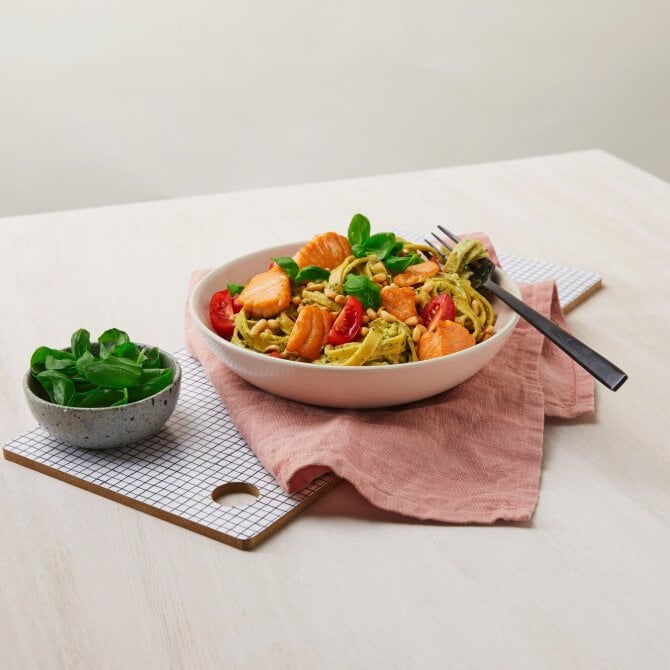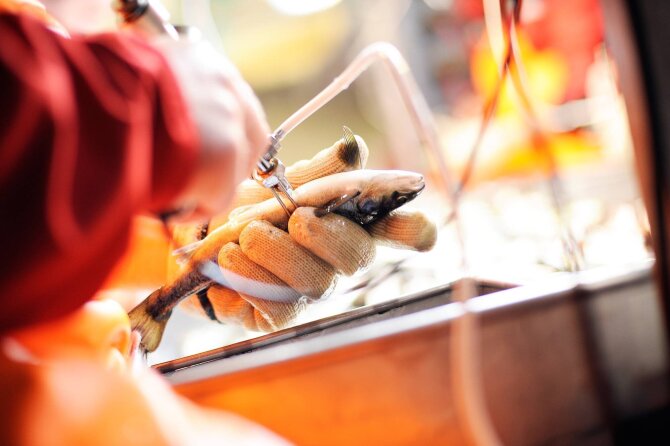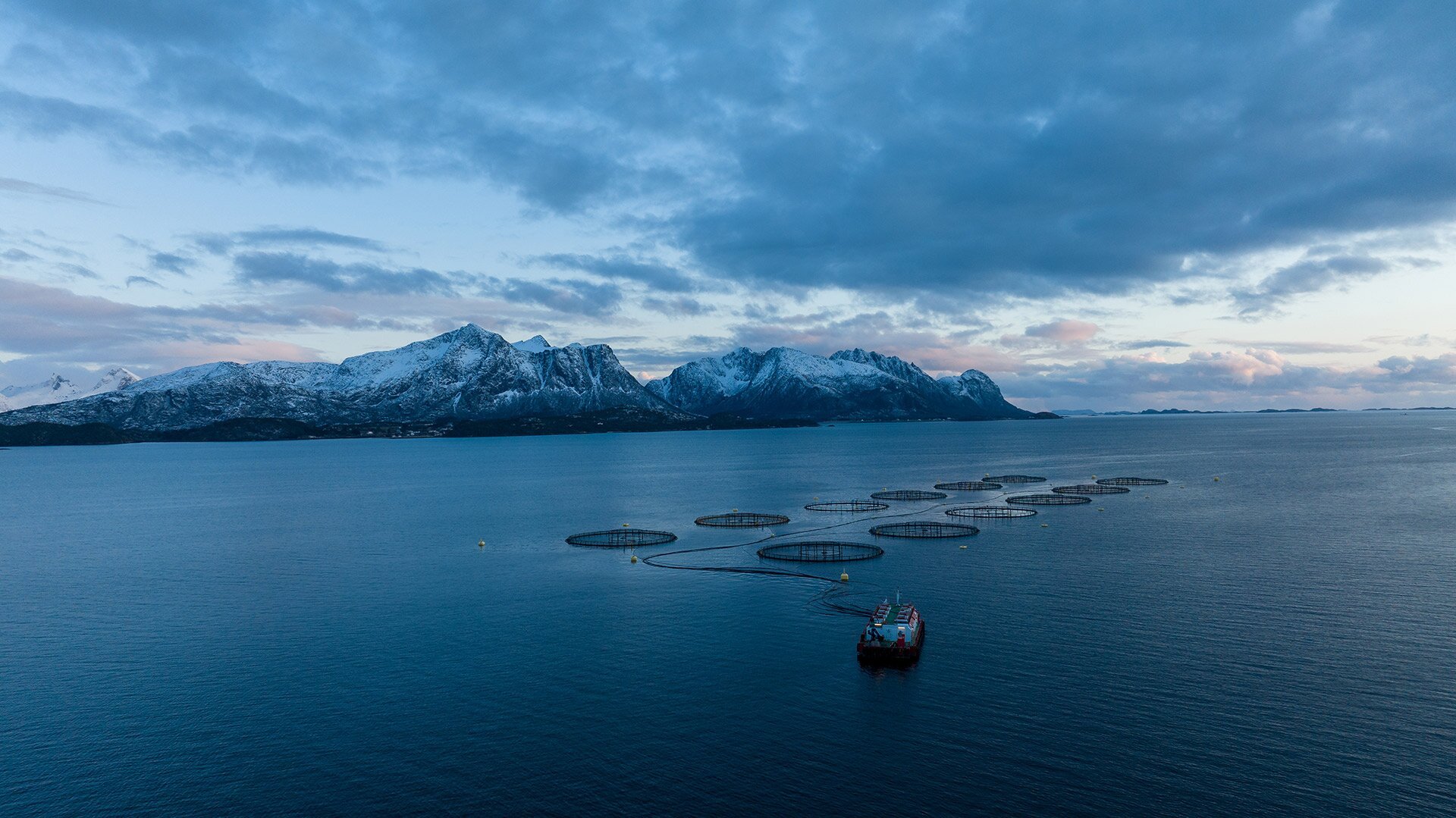In October, a book with the title “Un poison nommé saumon, enquête sur une industrie dévastatrice” was published. The content of the book mirrors the title, leaving behind an impression that farmed salmon should be avoided for several reasons.
Why aquaculture is viewed as an opportunity
Like most forms of food production, aquaculture of salmon also leaves its footprint. Be it local emissions or emissions of CO2. However, there are also well documented upsides with farming of seafood. According to UN’s Food and Agriculture Organization, it is identified as a key area for future food production.
This is due to the fact that seafood is full of nutrients important for human health and that farming of seafood is a relatively efficient method of producing protein. This in terms of feed, land, and water usage. Not to forget carbon emissions, one of the great battles the world is facing today. These factors are also some of the reasons why salmon farming companies have topped the list as most sustainable protein producers in international rankings over the last couple of years.
Norwegian salmon is safe and healthy food and there are systems in place to ensure this
Farmed Norwegian salmon is by competent food authorities deemed as safe and healthy food.
Levels of environmental pollutants have been reduced by some 60-70 percent over the last 15 years, which now means that farmed Norwegian salmon actually contains lower levels than many of its wild peers.
The Institute of Marine Research (IMR) in Bergen (Norway) monitors the content of nutrients and undesirable substances in Norwegian seafood and tests and analyses seafood for various undesirable substances. There are no findings of illegal substances or undesirable substances above the limit values.
Levels of environmental pollutants are not higher in farmed salmon than wild salmon. That being said, farmed and wild salmon are both deemed as safe and healthy food options.
The reason behind the drop of environmental pollutants in farmed salmon has to do with changes in feed composition. Whereas the feed earlier consisted of some 90 percent of marine ingredients, the main source of environmental pollutants, the inclusion rate has dropped to some 20-30 percent - leading to significantly lower levels.
Environmental pollutants are also present in most foods available to us, and is not unique to farmed salmon. Monitoring of environmental pollutants is rightfully part of benefit-risk assessments carried out on various consumer food products available to us, including Norwegian salmon.

Photographer: NSC
Marine ingredients in salmon feed feed derive from well managed fisheries
The change in feed composition also demonstrates that the industry has managed to become less dependent on marine ingredients. The book paints an image of salmon and feed companies being responsible for depletion of fish stocks. For many years now, the industry has strictly been sourcing marine ingredients from certified fisheries which are well managed with quota systems in place.
The vast majority of the fish species used for feed are low in demand in terms of human consumption. Lastly, a great deal of the marine ingredients derive from fish offal, which is an efficient use of raw materials. The change within feed is real and being able to adapt will also be key for the future.
Farmed salmon eat dry feed shaped like pellets. Around 70 percent of the feed consists of vegetable ingredients, while approximately 30 percent comes from marine raw materials such as fishmeal and fish oil.
- Marine proteins in feed:
~12.5% fish meal
~12% fish oil - Vegetable inputs:
~20% vegetable oil
~52% other vegetable ingredients - Other:
~3.5%
Norwegian buyers support the use of sustainable marine ingredients.
Recent fish oil/meal sourced from Mauritania comes from fisheries in Fishery Improvement Projects (FIPs).
By definition, a FIP addresses known challenges through timebound improvements. In Mauritania, issues for flat and round sardinella are documented; sourcing via a FIP brings clear requirements, including:
- Better data collection on catch, effort and biomass for the coastal fleet
- Support for governmentled management plans
- Strengthened monitoring and enforcement at sea and on land, and ecosystembased management
- Marine researchers who document the challenges also acknowledge the importance of these support efforts and projects (e.g., AGDpélagique, Promopêche/GIZ, FIPsmall pelagics, Shared Sardinella/NansenFAO)
- Relevant FIPs are designed with attention to artisanal fishers and to ensure a share of catches benefits local communities.
FishIn FishOut (FIFO) measures how many kilograms of wild fish (as fishmeal/oil) are used per kilogram of farmed salmon produced.
- Fish oil FIFO fell from 7.2 (1990) to 1.7 (2013)
- Fish meal FIFO fell from 4.4 (1990) to 1.0 (2013)
Norwegian salmon producers have long used certified deforestationfree soy.
In 2021, requirements were further tightened: Brazilian soy suppliers are prohibited from supplying soy grown on land deforested after August 2020 to any of their international customers. This applies even to buyers without such requirements.
As a result, soy suppliers to Norwegian salmon feed are 100% deforestationfree across their full value chains, since they cannot place deforestationlinked soy with other customers either.
This voluntary commitment followed sustained pressure from Norwegian feed producers, aquaculture companies and international retailers, and has been publicly praised by Brazilian environmental NGOs (incl. WWF Brazil).
A diverse pipeline of lowimpact ingredients is now commercial or nearcommercial:
- Microbial proteins and oils (fermentationbased)
- Insect meals (highquality proteins from several insect species)
- Algal oil supplying EPA & DHA (longchain omega3s)
- Chicken by-products and residues
In 2013, after thorough risk assessments, the EU amended its rules to allow the use of processed animal proteins (PAP/PAT) from pigs and poultry in fish feed within the EEA.
Because porkderived inputs are sensitive in some markets, Norwegian feed manufacturers have informed the Norwegian Food Safety Authority that pigderived raw materials are currently not used in fish feed in Norway. If such materials were ever to be introduced, Norwegian Food Safety Authority would be informed in advance.

Photographer: NSC
Use of antibiotics was an issue in Norwegian aquaculture – not anymore
Use of antibiotics has been close to eradicated within Norwegian salmon farming, an effort which has received international recognition as antibiotic resistance has been identified as a major global health challenge moving forward.
Today, less than one percent of all Norwegian salmon receives antibiotics in its lifetime, and if treated, a strict quarantine period is required to make sure that no residuals end up in products reaching the supermarket shelves.
Every year, Norwegian Food Authorities conduct thorough analyses of undesirable substances in farmed salmon. The yearly reports are readily available to the public.
A wider benefit risk assessment was also recently conducted by The Norwegian Scientific Committee for Food and Environment, which concludes that the benefits of eating fish (farmed salmon included) outweigh the risks.
Norway – big on farming and wild
By farming volumes, Norway is the largest salmon farmer in the world. It goes without saying that Norwegian fish farmers have a great responsibility towards its environmental surroundings and wildlife.
Despite Norway’s fish farming activities, Norway continues to host to some of the richest wild salmon populations in the world.
The decline in many of the world’s wild salmon rivers have taken place in many regions in the world, also in regions where no salmon farming activities are conducted. This goes to show that there are likely other contributing factors than fish farming alone.
Further, the industry has numerous measures in place to avoid escapes and dedicated re-catching programs to minimize its impact on wild salmon populations.
